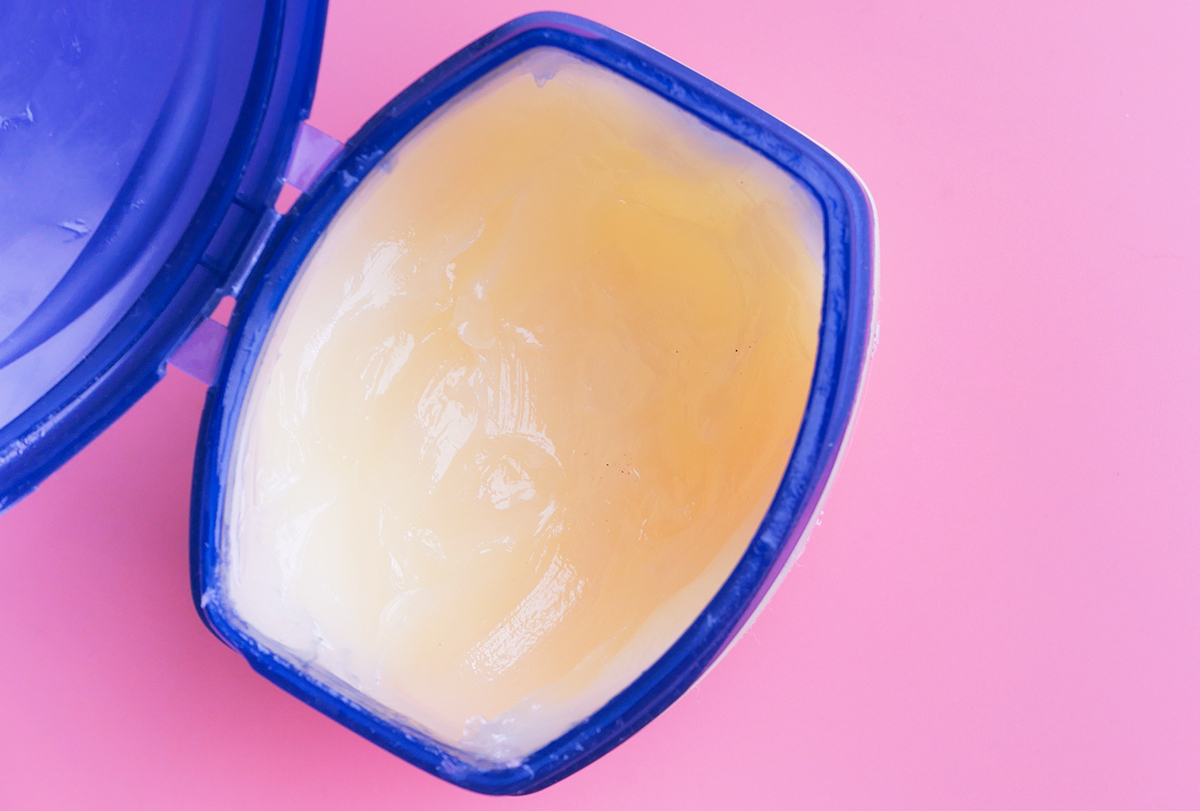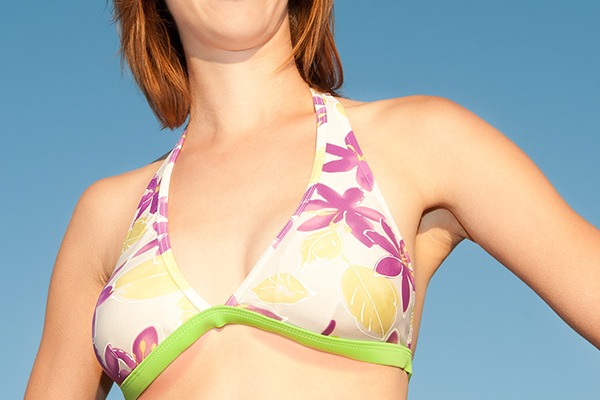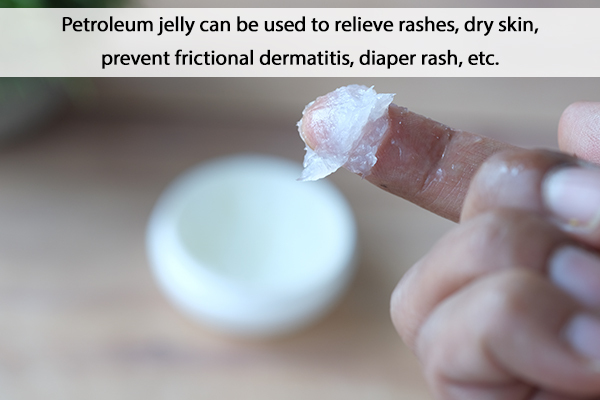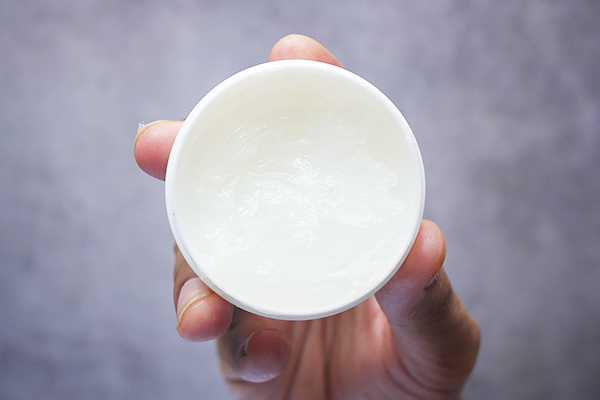In this article:
Petroleum jelly is a by-product of petroleum and was first introduced as a commercial product in the 1800s by Robert Augustus Chesebrough. Chesebrough noticed that workers in an oil refinery used the jelly-like substance found at the bottom of oil rigs as a balm to heal minor scrapes and cuts.

Petroleum jelly is a soft, waxy substance that is colorless and odorless and usually does not cause any side effects. It is essentially a mixture of mineral oil and wax and is widely used as an ointment all over the world.
Petroleum jelly may help soothe and heal different types of rashes but it is not recommended for treating rashes under the breast. This article will explain why that is.
Why Is It Not Advisable to Put Petroleum Jelly on Rashes Under the Breast?
Applying petroleum jelly on a rash under the breast can make it worse. Due to its waxy consistency, it forms a thick, impervious layer over the affected skin that can lead to occlusion folliculitis. Plus, it adds moisture to the skin, which further encourages microbial overgrowth that leads to long-lasting infections.
Another major concern associated with using some brands of petroleum jelly on a rash under the breast is the risk of exposure to a potential carcinogen.
Unrefined petroleum jelly usually contains harmful substances such as polycyclic aromatic hydrocarbons (PAHs), (1) 1,3-butadiene, and ethylene oxide, which have been linked with the development of mammary tumors or breast cancer.
What Causes Rash Under the Breast?
The skin folds under the breast rub against each other, causing inflammation that often takes the form of a reddish rash. The irritation caused by this skin-to-skin friction is made worse by sweat and heat.
The resulting skin inflammation is referred to as intertrigo. It is a fairly common skin condition that may recur throughout your life. (2)
Plus, the area beneath the breast of obese women initially promotes the overgrowth of Candida, which causes an infection and leads to maceration and redness. This microbe needs warmth and humidity to multiply rapidly and give rise to a secondary infection.
What Is the Correct Way to Treat Rashes Under the Breast?

The treatment for a rash under the breast depends on its root cause and severity, but it mainly focuses on the following aspects:
- Minimize the friction with skin and clothes.
- Keep the skin dry. (3)
- Curb skin inflammation.
- Control the growth and spread of infection.
Some commonly used treatment interventions for such rashes include:
- Barrier creams
- Topical steroids
- Topical or oral antifungals
- Topical or oral antibiotics
Consult a dermatologist for the appropriate treatment.
How to Prevent Getting Rashes Under the Breast?
Here are three simple measures that can help reduce the risk of intertrigo or keep it from getting worse:
- Keep the area under your breasts clean by washing it with a gentle wash.
- After washing, let the skin under your breasts dry completely before putting on your bra. You may also apply emulsifying ointment every morning and night.
- Wear bras that fit properly and are made from natural, breathable fabrics such as cotton, rather than synthetic materials such as nylon that trap sweat and moisture.
What Are Other Topical Uses of Petroleum Jelly?

Petroleum jelly can be used for skin healing in the following ways:
- Relieves rashes: Petroleum jelly can help soothe rashes caused by allergic dermatitis by hydrating the irritated skin and reducing the associated itch. (4)
- Relieves dry skin: Petroleum jelly helps soothe dry skin by retaining moisture and hydrating it. (5)
- Prevents frictional dermatitis: Skin chafing occurs due to the rubbing of the skin against itself or a fabric, leading to redness, irritation, soreness, and rash. This type of dermatitis is referred to as frictional dermatitis, and it usually occurs on areas with skin folds such as the inner thighs and inner arms, especially in overweight individuals. Petroleum jelly helps lubricate the skin and prevent eczematous changes in the skin due to physical frictional forces.
- Prevents diaper rash: Petroleum jelly can be applied to the baby’s buttocks to reduce friction against the diaper. The edge of the diaper rubs against the baby’s soft skin, causing irritation, redness, and even a rash. Petroleum jelly forms a thick protective layer over the skin to minimize diaper dermatitis.
- Relieves eczema: Petroleum jelly moisturizes and soothes the skin, thus helping prevent eczema flare-ups. It can also protect the skin from environmental allergens and irritants.
- Treats cheilitis: Cheilitis is the medical name for lip inflammation characterized by redness, dryness, itching, and cracked skin. Petroleum jelly works as an intensely lubricating ointment that soothes dry, chapped lips. Plus, it forms a thick layer over the cracked skin to protect it from further damage. Petroleum jelly is a better alternative to regular lip balms that contain chemicals for fragrance or flavor.
What Are the Side Effects of Using Petroleum Jelly?
Petroleum jelly usually does not cause any side effects and is well tolerated by most people. (6) However, always check the ingredient list on any petroleum jelly product before use to make sure you are not allergic to any additives.
If you experience any redness, irritation, or itching while using petroleum jelly, discontinue use immediately and contact your doctor if the condition does not improve.
What Are Safer Alternatives to Petroleum Jelly?

Several natural alternatives to petroleum jelly are available. If you are unable to use petroleum jelly for any reason, you can always opt for shea butter, coconut oil, beeswax, cocoa butter, etc.
All of these are natural moisturizers that help soothe skin dryness and irritation without causing any adverse side effects.
Final Word
Make sure to always use triple-purified petroleum jelly as it is dermatologically approved for use and does not cause any adverse reactions.
Although petroleum jelly is a very useful skin care product that can help relieve skin irritation and dryness, using it on rashes under the breast will only make the condition worse. So, it is recommended that you choose safer alternatives such as the ones mentioned above.
- Was this article helpful?
- YES, THANKS!NOT REALLY


